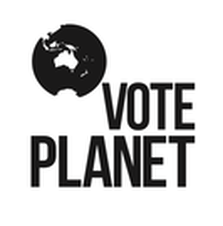|
By Jane Edwards Just months ago in Australia pre COVID-19, it would have been unthinkable that:
We are seeing both use of ‘command and control’ (centralising powers to deal with an emergency) alongside massive public spending focused on the common good with funds that were not supposed to exist. Both are an anathema to a neoliberal government. The curtain has dropped, and we can see what governments are actually capable of doing if they want to. It’s from a crisis that opportunities arise and that long term change is most likely to occur. We can’t blow this opportunity. It’s not enough to just say the standard operating model is wrong - what are the concrete ideas we have to replace the neoliberal operating system that puts corporate profits ahead of the common good? The LNP’s 'stimulus' package for coming out of COVID-19 will most likely focus on pumping more public funds into corporations and sectors that donate to the party in the name of jobs, including mining and fossil fuels. There is evidence that mining firms are taking the COVID-19 opportunity to increase automation - there go the jobs. Fossil fuel extraction is a dying sector and we would only be investing Australia’s future in stranded assets. We are also seeing environmental destruction ramp up under the cover of COVID-19. In Victoria alone we’ve seen the extension of agreements that exempt the logging industry from conservation laws for 10 years and the onshore gas moratorium rolled back. But what should the government’s response look like, understanding that the impact of COVID-19 will likely take years to recover from and could be more serious than the Great Depression when unemployment reached 30%? Once isolation is over, a massive fiscal stimulus will be required. Where would the funds come from? Our government, with the support of Parliament, can create those funds digitally. Yes, federal governments with floating sovereign currencies can do this and all they need is approval of Parliament/Congress. The Australian $80 billion-plus released so far for COVID-19 was created this way but the amount was then traded in government bonds. Federal bonds don’t raise capital - they are not a loan to the government. At the federal level, the government creates the dollars required and then gets investors to accept the liability of those dollars for the promise of a financial return. Adding money to the economy this way should not cause inflation unless the economy is approaching full employment, and in the context of a stimulus post COVID-19 there would be plenty for that money to do - this is at least the premise of Modern Monetary Theory (MMT). Links below provide relevant background to MMT. The risk of inflation is irrelevant when contrasted with the risk of no fiscal stimulus - and inflation is easily controlled for using taxes and interest rates. As radical as this may sound, the stimulus should put the wider common good at the centre. As such, the response should be a climate emergency investment package because the climate emergency is the ultimate crisis we face, and the climate emergency requires a ‘wartime’ mobilisation effort. And there would also be likely support for such a response. The Australia Institute recently found that two thirds of Australians (66%) agree that Australia is facing a climate change emergency and should take emergency action, as was taken during the world wars. A true climate emergency response if implemented globally is one that could stop and then reverse global warming to ultimately restore a safe climate. Such an effort at a national level would create:
What should the climate emergency response and stimulus look like?
As to the details - these have been worked on and modelled by groups such as Beyond Zero Emissions, Zero Carbon Britain and others. Plans exist. A ‘negative carbon Australia’ is possible. The climate emergency package can also look however we want it to - based on our priorities and the key performance indicators we put in place to guide our society. For example, how central is equity? Education? Etc. And why would Australia go out on a limb to do this when it can’t save the planet alone? Because Australia has vetoed stronger action on climate for over 20 years. Previously we stood in veto with the US and now stand in proud veto with Russia and Saudi Arabia. If Australian coal and gas exports were taken into account, we would be in the ranks of the top emitters globally, and we have the equal highest per capita emissions. Australia now needs to lead. Yes, the likelihood of the proposed climate emergency action under the current government is next to laughable, but the alternative is giving up on a safe planet. We can’t let the Aus government use this opportunity to further entrench neoliberalism and prioritisation of corporate profits, corruption, and authoritarian lawmaking. We have to be louder than the lobbyists and loud in the media via letters to the editor, op eds etc. We need to contact our MPs and share this vision with them. Are you lucky enough to be able to sit at home in isolation? Use at least some of your time in isolation to give our future a chance. Links Modern Monetary Theory, COVID-10 and the economy. Dr Steven Hail We're in 'emergency mode' for coronavirus — we can do the same thing for climate. Margaret Klein Salamon, Things we can learn from COVID-19 to help with the climate emergency, The Fifth Estate A Green Stimulus to Rebuild Our Economy: An Open Letter and Call to Action to Members of Congress VIDEO - Prof Stephanie Kelton - The Deficit Myth - 2020 Harcourt Lecture - 15 Jan 2020 Australians Want Gov. to Mobilise Against Climate Change Like a ‘World War’, the Australia Institute
4 Comments
|
AuthorsBloggers on this page include Adrian Whitehead, Philip Sutton, Bryony Edwards, Andrea Otto, David Lughermo. Categories
All
Archives
July 2022
|

 RSS Feed
RSS Feed
